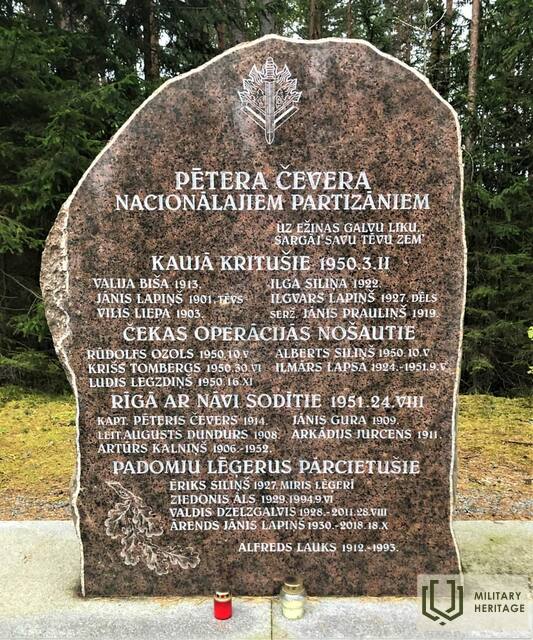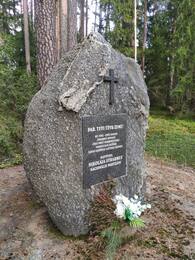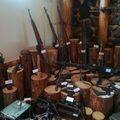Pēteris Čevers - nacionalinis partizanas ir partizanų grupės vadas
Pēteris Čevera - nacionalinis partizanas ir tautinių partizanų grupės vadas
Pēteris Čeversas gimė 1914 m. sausio 9 d. Barkavos valsčiuje, Rėzeknės apskrityje.
1937 metais baigė Karo mokyklą ir iki 1940 metų tarnavo 1-ajame kavalerijos pulke.
Po sovietų okupacijos 1941 m. pavasarį buvo perkeltas į 24 teritorinio šaulių korpuso 186-ąjį pėstininkų pulką.
1941 m. birželio 14 d. Ostrovo lageryje, išgirdęs apie suėmimus, kartu su keliais kitais karininkais įstojo į pulkininko leitenanto Kārlio Aperato vadovaujamą būrį „Tėvynės sargai“.
1942 m. vasario mėn. savanoriu įstojo į 23-iąjį tvarkos tarnybos batalioną.
Nuo 1942 m. kovo iki 1943 m. vasario po specialių mokymų tarnavo specialiųjų užduočių pulke „Brandenburgas 800“.
1943 m. kovo mėn. įstojo į Latvijos SS savanorių legioną, vėliau tapo 19-osios divizijos 43-ojo pulko 14-osios prieštankinės kuopos vadu, su kuria ėjo mūšio kelius nuo Velikų upės krantų iki Kuržemės. Jis buvo apdovanotas Geležinio kryžiaus 2 ir 1 laipsniais, Karo nuopelnų kryžiumi ir Sidabriniu smūgio ženklu.
Kuržemėje pasidavus vokiečių kariuomenei, P. Čeveris kartu su keliais savo pulko karininkais ir kariais apsigyveno Talsų rajono Vandzenės parapijos miškuose, kur prisijungė prie kapitono Nikolajaus Straumės būrio. Nuo 1948 metų gegužės mėnesio Vānsienės ir kitų aplinkinių Talsų rajono parapijų grupės vadu tapo P. Čevers.
Dėl išdavystės P. Čeveris ir dar šeši grupės nariai buvo sugauti 1950 m. lapkričio 1 d. naktį. 1951 m. balandžio 3 d. Baltijos karinės apygardos karinis tribunolas P. Čeveriui skyrė maksimalią bausmę. Nuosprendis įvykdytas 1951 m. rugpjūčio 24 d.
Pēteris Čevers buvo Latvijos kariuomenės karys, Latvijos legiono kapitonas, nacionalinis partizanas (nuo 1945 m. gegužės 9 d.), tautinės partizanų grupės vadas (1948-1950).
Vandzenės partizanai ir jų rėmėjai. Blumų šeimos tragedija ir „Valdų“ namų paslaptis / Straipsnis (lsm.lv)
Autorius: Uldis Neiburgs (dr. Hist., Latvijos universiteto Latvijos istorijos instituto mokslo darbuotojas)
Susijusi laiko juosta
Susijusios temos
Susijusios vietos
Pēteris Čevers national partisan bunker
The bunker of the national partisans of Peter Chever is located in Lauciene municipality, about 4 km from the Talsi-Upesgrīva road. A trail covered with wood chips leads to the bunker. The renovated 31 square metre bunker is made of a concrete frame finished with half-logs of logs to create an authentic feel.
Captain Chever's group completed the bunker in the forest near Vangzene at the end of October 1949. It was planned to survive the winter of 1949-50. On 3 February 1950, the local forester betrayed the partisans and the bunker was attacked by a Cheka unit of more than 300 soldiers. At that time there were 19 people in the bunker - 17 men and two women. Six partisans fell in this unequal battle, but the others managed to break through two chains of Cheka siege by fighting their way through. By the end of the winter the partisans took refuge in surrounding houses with their supporters, but in the spring the group reunited until it was captured and destroyed in November 1950. After an attack by Cheka troops, the bunker was blown up and before it could be rebuilt, only a water-filled pit remained.
Memorial stone of the national partisans of Nikolaj Straume
The memorial stone is located on the Slokas-Talsu highway, near the Ridelu mill.
The group of national partisans of Captain Nikolaj Straume ("Buks") was formed soon after the capitulation of the German army and operated in the forests of Tukums and Talsi districts. The basic composition of the group consisted of officers and soldiers of the Latvian Legion, who were also joined by local residents. The names of 38 participants are known. In December 1945, the group set up a winter bunker for 10-12 fighters in Lauciena parish. In January 1946, the troops of the Soviet People's Commissariat of State Security tried to surround the camp, but the entire group successfully escaped the encirclement without loss. Between March 1947 and October 1948, Soviet troops carried out several operations arresting supporters of the national partisans and killing fighters in several battles. Nikolaj Straume was shot on October 13, 1948.
Nikolajs Straume was one of the leaders of the joint action of the national partisan groups of Talsa and Tukum.
Rendos nacionalinio pasipriešinimo judėjimo muziejus
Muziejus yra įsikūręs už kelių kilometrų nuo Rendos parapijos centro. Parodoje pasakojama apie 50 metų trukusį pasipriešinimo judėjimą Latvijoje: pasipriešinimą pirmajai sovietų okupacijai, pasipriešinimą nacistinės Vokietijos okupacijai ir ginkluotą bei nesmurtinį pasipriešinimą sovietų okupacijai. Paroda įsikūrusi dviejuose pastatuose. Pirmajame pastate saugomi pirmosios sovietų ir vokiečių okupacijos įrodymai. Parodoje eksponuojamas restauruotas tvarto pastatas, kuriame dėmesys sutelktas į Nacionalinį partizaninį karą. Tarp dviejų pastatų yra autentiško išplanavimo bunkeris ir kareivių naudoti apkasai. Netoli muziejaus Rendoje esantys kasinėjimai, blindažo aikštelė ir kliūčių ruožas tarnauja kaip jaunimo sargybinių ir visų susidomėjusiųjų treniruočių aikštelė. Apsilankymus būtina užsisakyti iš anksto.
Vienas didžiausių nacionalinių partizanų mūšių, vadinamas Āpūzniekų mūšiu, įvyko 1946 m. sausį netoli čia. Mūšyje Kabilės nacionalinis partizanų būrys nugalėjo daug didesnes okupacinės valdžios pajėgas. Mūšio vietoje, kurioje yra informaciniai stendai, dabar įrengta poilsio aikštelė.









